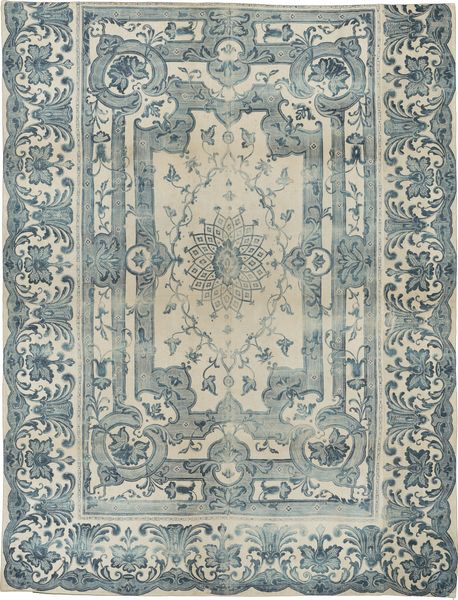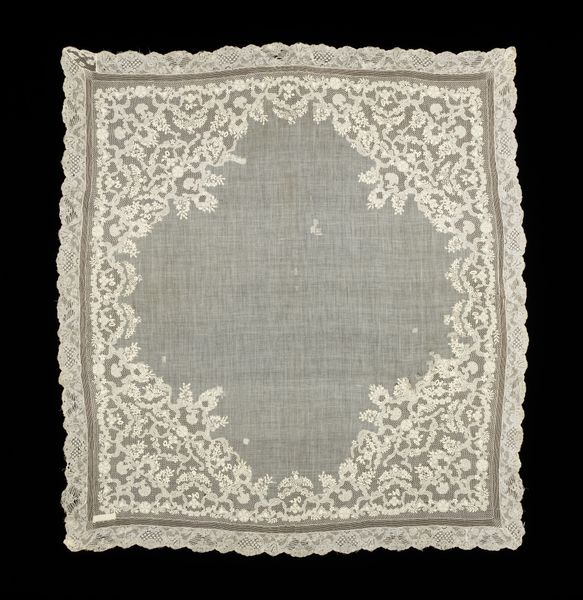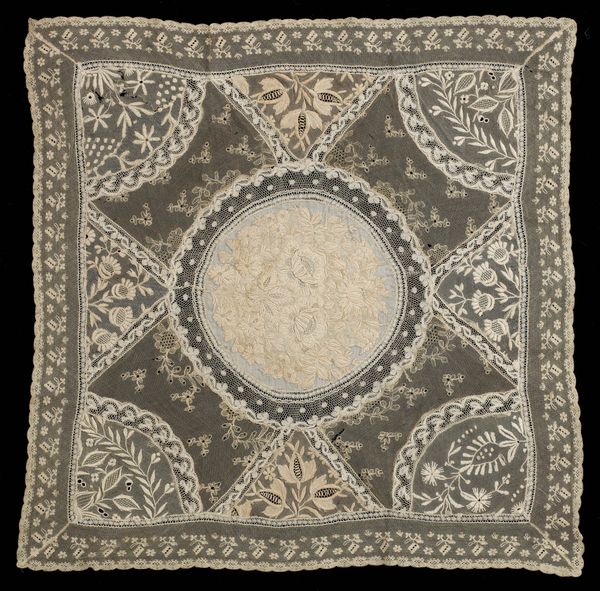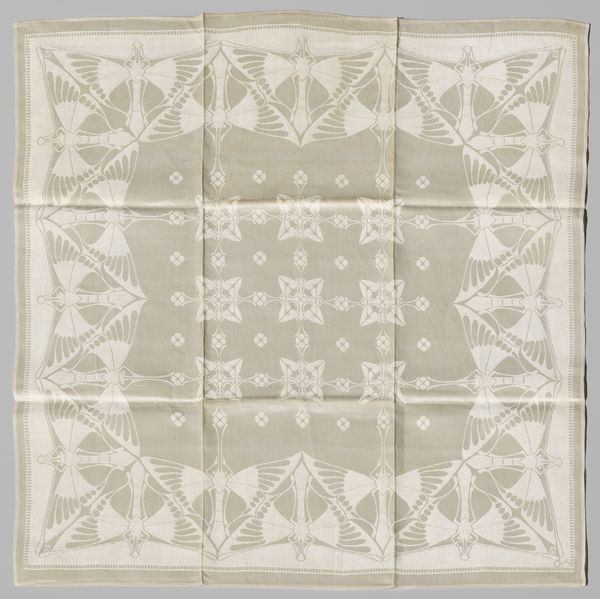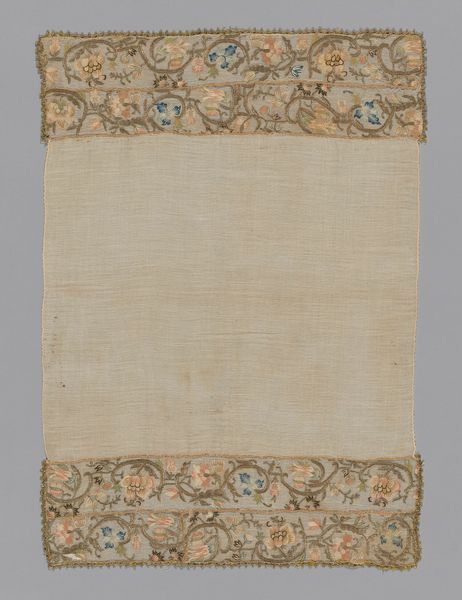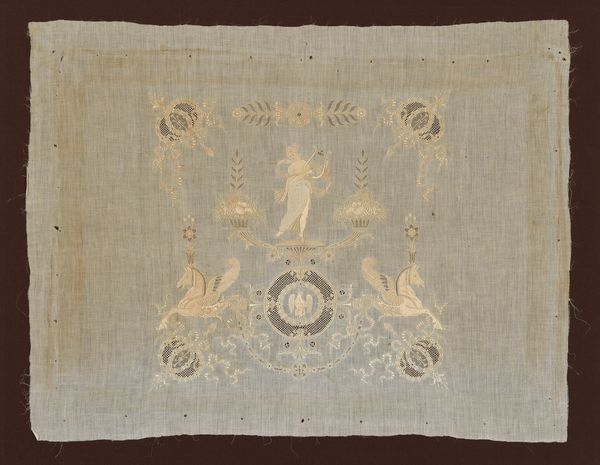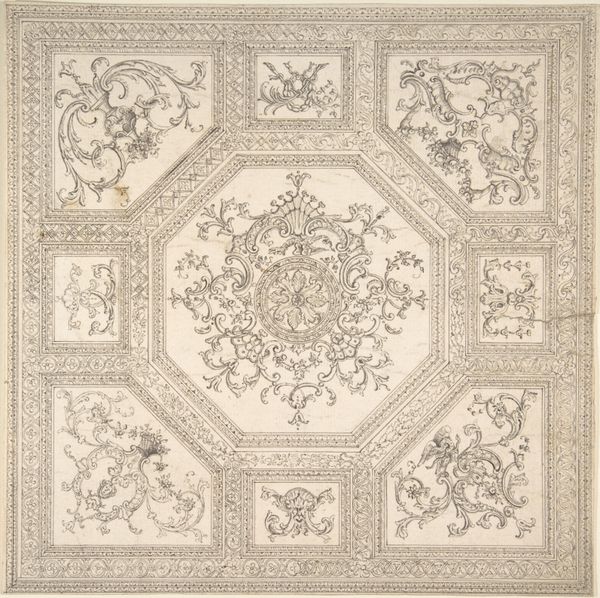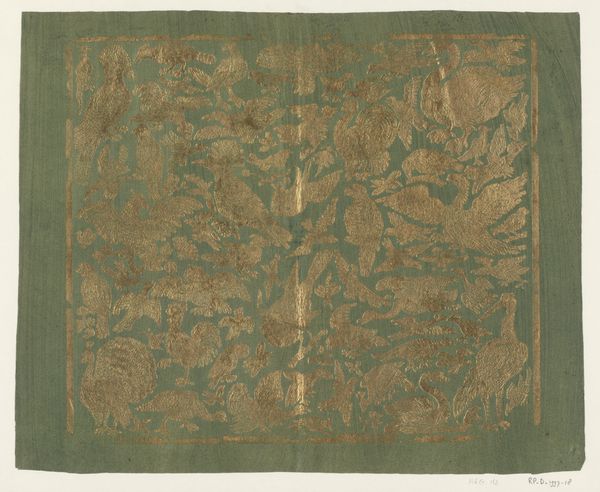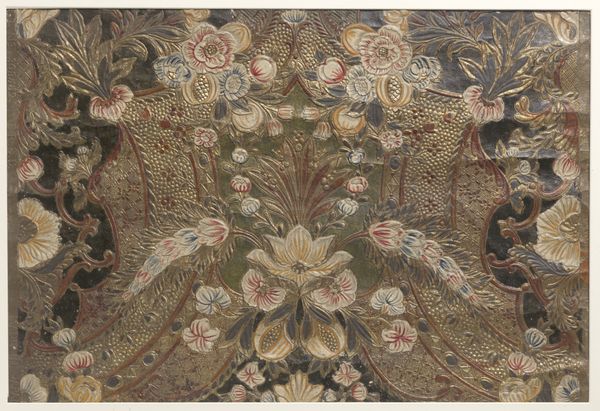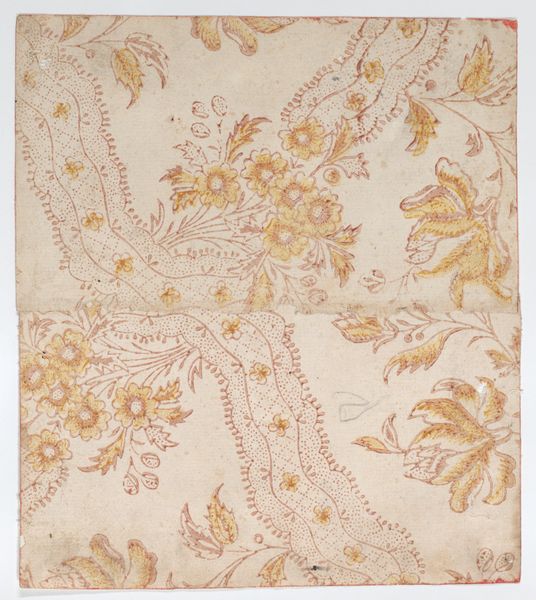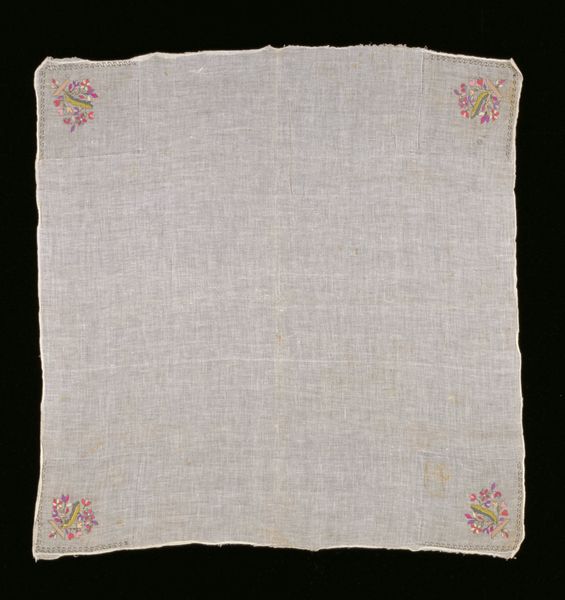
ornament, weaving, textile
#
ornament
#
medieval
#
pattern
#
weaving
#
textile
#
text
#
textile design
#
decorative-art
#
imprinted textile
#
miniature
Dimensions: L. 13 x W. 12 3/4 inches 33 x 32.4 cm
Copyright: Public Domain
Curator: Good morning. We're here today to discuss an exquisitely delicate piece from the Met's collection: a handkerchief created sometime between 1845 and 1855. It’s an impressive example of weaving, representative of decorative art styles, with text and heraldic design work, specifically in the form of imprinted textile. Editor: My initial response is simply breathlessness. The intricate lacework, the barely-there quality of the textile itself… it feels almost ghostly, a relic of a vanished, impossibly refined world. Curator: It's easy to see how you might arrive at that conclusion, given how handkerchiefs shifted to emblems of social identity within that period. These weren't utilitarian objects in the truest sense, though the practicality can not be fully dismissed, rather symbols representing status and access and markers of evolving class stratifications, notably between elite women during this time. Editor: Precisely. I'm immediately struck by the formal tension. There’s a rather stark contrast between the plainness of the central panel and the absolute riot of detail in the border. How might we interpret this relationship, this interplay of void and ornamented space? Is it to accentuate, and celebrate what lies inside? Is this in itself part of the piece's structural form, a sort of framing to direct the eye? Curator: Yes, in a sense you are absolutely right. The symbolic weight this "void" carries within this piece highlights the changing cultural importance placed on simplicity and unadorned grace as signifiers of elevated status—in contrast to more elaborate display and ostentatiousness found in past forms of visual display. Moreover, one has to recognize its status as an ornament of high quality with its inherent medieval aesthetic design roots—all combined within the smallness of the "miniature" context in which the textile has to inhabit, increasing both its structural weight as a statement of class and position. Editor: Which makes this textile a statement of power and luxury as well as an artistic symbol of the changing historical structures surrounding social presentation. It is so delicately constructed, though, almost as though the very patterns would dissipate with use; I am in awe. It makes me want to investigate other, similar pieces. Curator: It is pieces such as these that force one to think on the complexities of context when looking at decorative items with unique composition features. Let us move onto other such specimens.
Comments
No comments
Be the first to comment and join the conversation on the ultimate creative platform.
